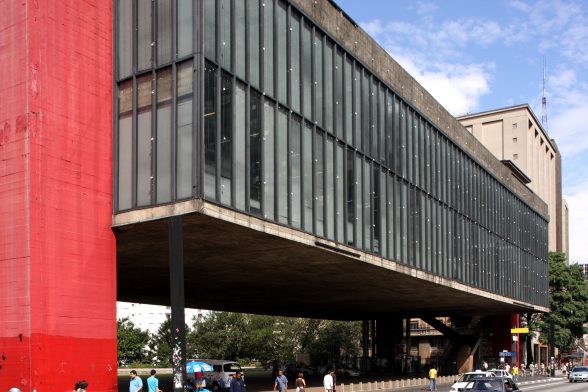

We are pleased to announce the theme of Autumn Lectures Series, starting October 21st: Mid-Century Modern.
Save the dates: lectures will take place on Thursdays at 6.30pm on 21st October, 28th October, 4th November, 11th November, 18th November, 25th November, 2nd December.
Alan Powers, who has convened the series, writes, ‘Depending on how far you stretch it, the term covers a broad slice of time. Does it mean anything special in terms of twentieth century architecture? Listening to our online lecture series this autumn, you may discover the answer, not just for Britain or Europe, but for more remote parts of the world, as we range with our expert guides into India, Sri Lanka, West Africa, Australia and Brazil. Architecturally, Mid-Century could be said to mark maturity in Modernism, when its youthful, risk-taking energy became more grounded in place and purpose. It was also a time of geographical expansion. Ex-colonial countries, discarding classicism, found new identities through public and private buildings, and architects displaced from Europe by war, such as Lina Bo Bardi, found new homes and professional arenas. It seems the right time to look at some of these other cultures, and to celebrate a great survivor of the period, Balkrishna Doshi, who will be 94 when Manon Mollard lectures about him.
For many people Mid-Century, with its handy label, is an entry point for enjoying modern architecture of all kinds. It is less easily characterised than ‘International’ Modernism of the 1920s, although many of the leaders of that moment joined in modifying their often manic technical and aesthetic convictions into more decorative, colourful shapes and textures, a Modernist equivalent of the Renaissance becoming Baroque. Peter Moro’s work on the interiors of the Royal Festival Hall offers a prime example. The term ‘Mid-Century’ usually implies the word ‘Modern’ as a suffix, but it is rarely pointed out how the negotiation between Modernism and the prevailing figurative architecture of the first decades of the century was a continuing theme and produced many original works of synthesis that filled the gaps in bombed cities, as Wolfgang Voigt will demonstrate in relation to post-war Germany.
The diversity and complexity of Mid-Century was challenged by younger architects yearning to return to rigorous and puritanical values under the banner of New Brutalism, and despite popularity, it has usually been treated by historians as an ‘also ran’ category. But if we accept that architecture is not a race with a winning post, we might instead sit by the trackside and simply enjoy the game for its own sake.’
Discover more from reviewer4you.com
Subscribe to get the latest posts to your email.





